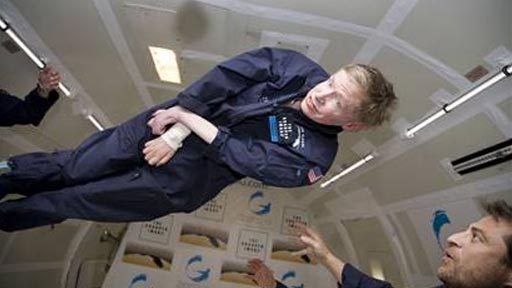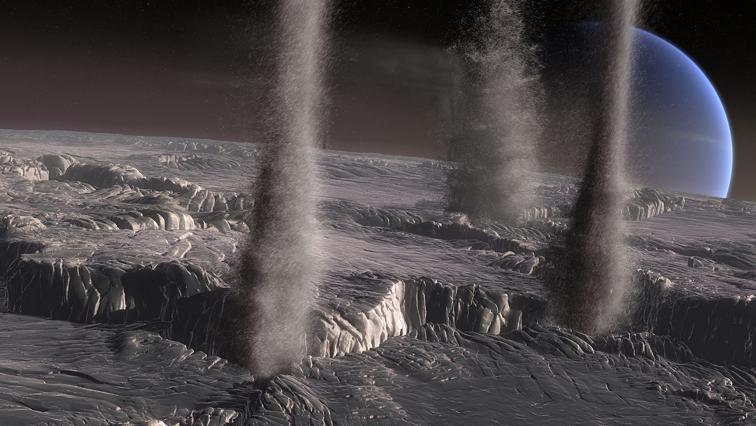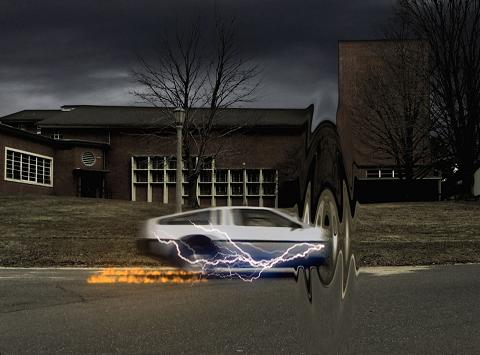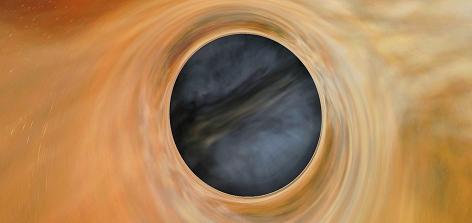The filming of the objects in zero gravity was done especially for Space Week on the National Geographic Channel (January 11-18) * in the films that will be shown during Space Week: Journey to the Edge of the Universe, The End of the Universe, Earth Exploration: Time Machine, Robots on Mars and a film about the preparations for the renovation of the Hubble

The National Geographic Channel took 20 jelly cubes, a billiard stick, four balloons, two apples, several torches, four M&M packs, and a G-Force One plane - all of which will experience zero gravity.
The experiment was conducted inside a Boeing 727 aircraft, called G Force One, which was specially adapted. The plane is the same type used by NASA for astronaut training. The plane made a series of flight maneuvers known as parabolic dives to achieve zero gravity.
A team of 14 people led by Steve Shannon (from the producers of Brothers and Sisters) and Lee Parker (from the UK National Geographic Channel) experienced 17 parabolic dives, which allowed them 8 and a half minutes of filming.
They made sure that every second in zero gravity was captured on film. Whenever zero gravity was reached, the crew members on the plane were sent to float, including the lighting, cameras and props.
"Blood is flowing towards your head, but you don't remember rolling over on your head. In fact, even though you are strapped to the chair, you don't know which is up and which is down. As the blue sky outside the window turns dark, your stomach rises towards your throat. It feels like you're falling, and you instinctively look for a handle to grab onto. But the panic is short. A deep breath will ease the nausea, and then you release yourself from the seat belt and begin to float and float freely in the spacecraft cabin. You have just taken the first step in a new and strange environment, where gravity does not exist."
Each of the 13 objects was placed in the center of a yellow frame - the symbol of the National Geographic Channel.
Lee Parker said “These are a truly unique set of objects, over six months of planning for 17 minutes of live shooting, where our entire purpose was at the mercy of zero gravity – without any visual aids or tricks. What you will see is exactly what we filmed."
The broadcast of the levitation of the objects will be done in 166 countries at the same time andYou can watch them at this link.
What does zero gravity mean?
This is the lack of influence of any gravitational force, caused either by distance from bodies with mass, or during free fall by the force of gravity. In fact, it is difficult to achieve complete absence of gravity. Even in Earth's orbit there will be a tiny amount of gravity, caused by the spacecraft on the way. If so, the more accurate name would be: the absence of gravity (which causes weightlessness).
space week
The data and wording, as well as the images, were obtained from National Geographic
The programs that will be broadcast during Space Week will cover many topics from black holes to time travel, the possibility of life on other stars and the dramatic end of the Earth.

Sunday, 11/1/09, 21:00 Journey to the Edge of the Universe, a two-hour film: a cosmic journey from Earth to the edge of the universe... with the help of a unique combination of real images from a spacecraft, images from the world's largest Hubble telescope, and visual effects with modern technologies - all this creates a journey from here to infinity.
Sunday, 11/1/09, 23:00 - Investigating the Earth: Time Machine Earth (Investigated). Time travel used to be taboo. Many scientists today believe that time travel is possible, even inevitable.

In this program, physicists such as Stephen Hawking and Michio Kaku will explain about this possibility. Both agree that time travel to the future is possible. Traveling at a speed close to the speed of light will slow down the experience of the pace of time. But other physicists are trying to find ways to travel back in time. To do this they try to wrap space and time using gravity. Time travel to the past raises some difficult questions and most importantly - can the time traveler change the face of history?
Monday, 12/1/09, 22:00 - Death of the Universe A journey through the universe in search of answers that will describe how this will all end. Three theories about the fate of the universe are brought to life, as the show reveals the battle between dark matter and dark energy - forces that will determine whether the universe will collapse, freeze or tear into doom.

With never-before-seen spectacular graphic means, the principles behind each theory can be explained, and the examples will make some of the most complex scientific questions accessible to the audience. Ultimately, the film provides a greater understanding to viewers about the location of our universe and its destiny.
Tuesday, 13/1/09,21, 00:XNUMX: Hubble - Space Telescope (Hubble's Final Frontier). Astronauts are preparing for a final encounter that will wake up the Hubble Space Telescope. This is a dangerous mission. Is the telescope worth the risk? Hubble was the key that unlocked many of the mysteries of the universe. A tour of the fronts of space shows the discoveries made by Hubble. With its help they revealed the creation of stars and planets, the glory of a supernova (new star), the formation of black holes, the mapping of dark matter and the change in the understanding of reality itself. The film shows how Hubble perceived the origins of the universe and the end of time. What are NASA planning for the space telescope, and who will be the successor?
Tuesday, 13/1/09, 22:00- Robots on Mars Martian Robots. When they landed on Mars in January 2004, they expected that the Mars vehicles "Spirit" and "Opportunity" would last only a few months. Five years later they are still working. They toured far across the hostile prairies, climbed mountains, got stuck in sand dunes, entered and exited deep craters, survived dust storms and mechanical breakdowns. They exceeded all expectations, but age plays a role. The film takes viewers on an adventure to Mars and tells the untold story of the mission that has come to an end.

4 תגובות
The Hubble telescope is not the largest telescope in the world, as stated in the article, but it is a telescope located in space, (it is actually relatively small compared to some telescopes on Earth)
J:
"Weight 0" so how about a submarine?
This is not surprising because "weight" is merely an expression of gravity.
This formulation does not solve the problem. This is simply a form of expression that describes what happens when moving in an inertial orbit.
Zero gravity - so how does the plane sink?
Isn't it more correct to say weight 0?
I saw the promo on National Geographic Israel, space has always fascinated me, I'm impatiently waiting for the start of next week.